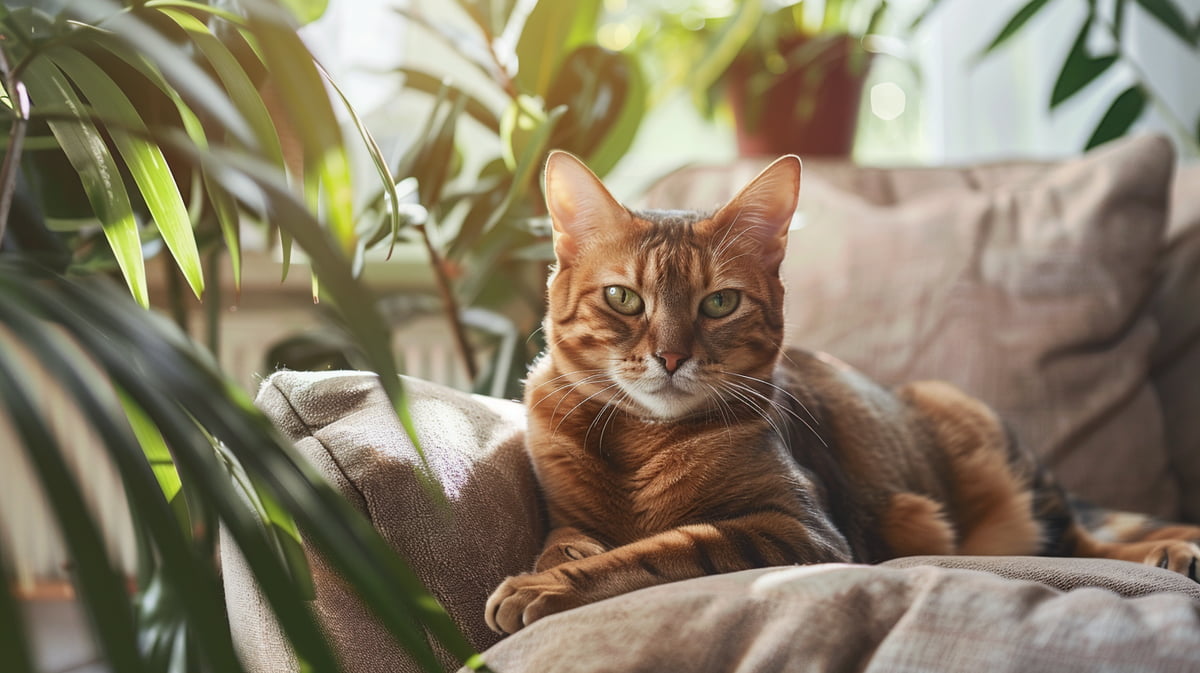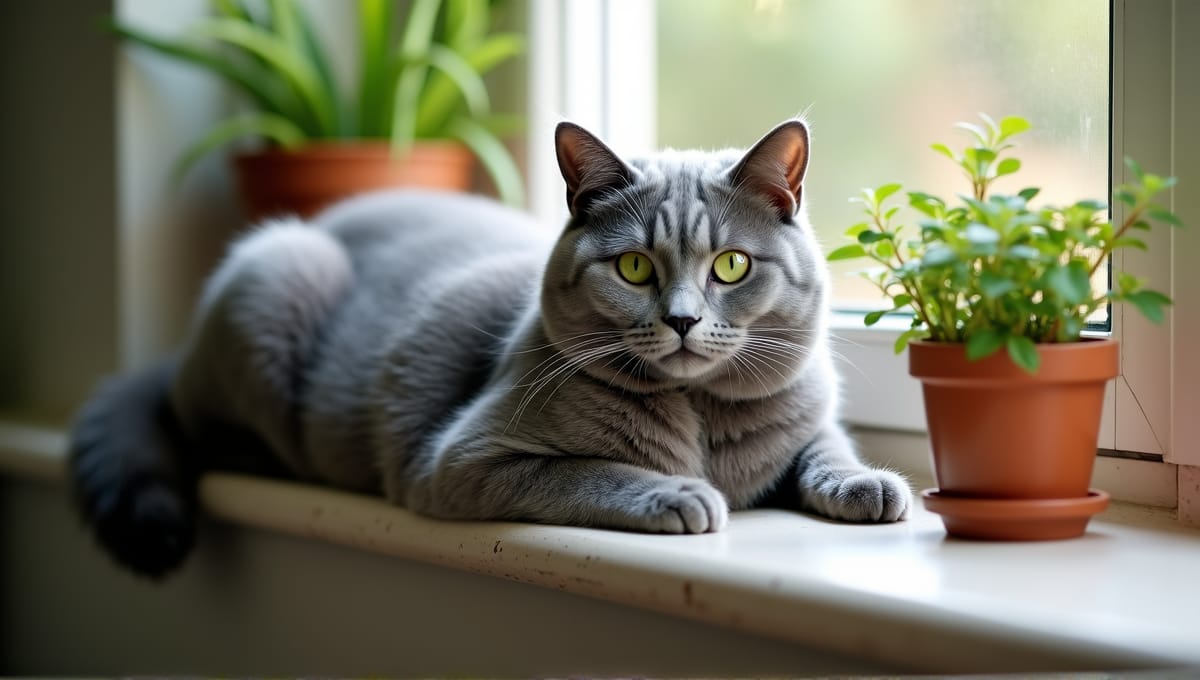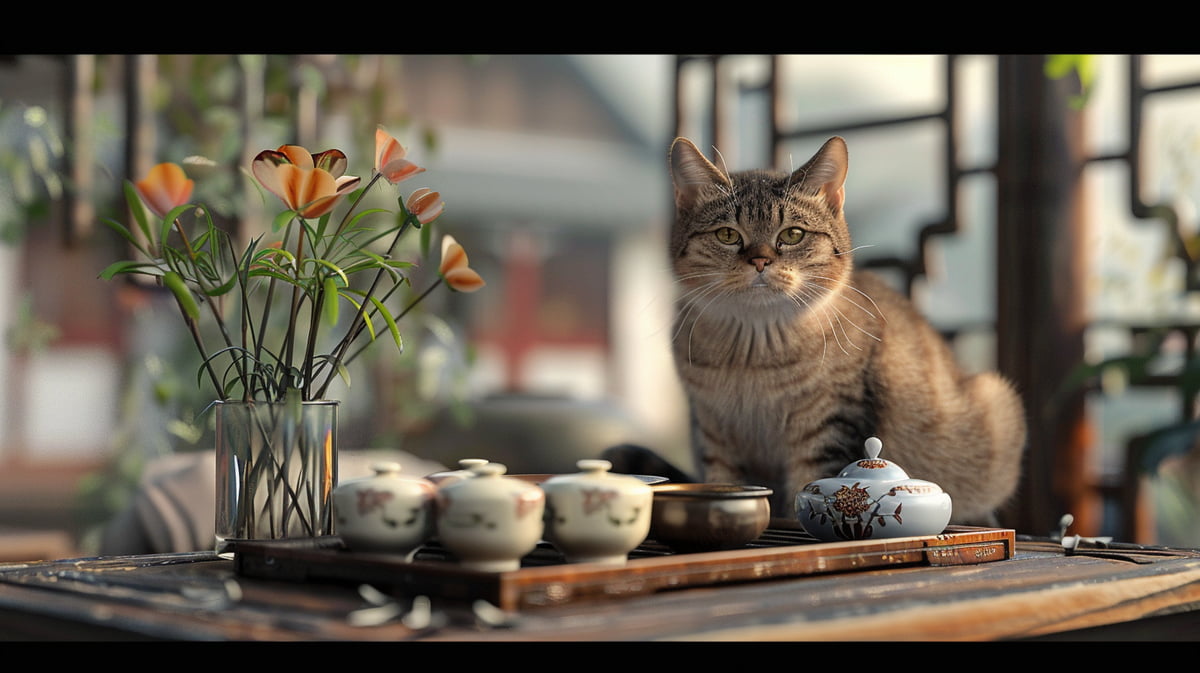Orange cats are stunning creatures. Their warm orange fur can range from a light peach color to a deep, rich orange hue, and it comes in a variety of patterns. I’ve personally always been attracted to these colorful cats, so I decided to research the best orange cat breeds. So, which breeds are best for you? Here are a few of the most common options.
Genetics of Orange Cat Coloration
We love orange cats for their fiery furs. I’ve been a cat lover for as long as I can remember, and I’ve probably logged thousands of hours researching cat genetics. So, what makes orange cats orange? It all comes down to pheomelanin. This pigment dictates the level of orange in a cat’s fur.
Here’s an interesting tidbit. The gene that makes a cat orange is sex-linked. It’s specifically found on the X chromosome. As a result, males need just one copy of the gene to be orange, while females need two copies. This little genetic technicality is why most orange cats are male.
Orange cats come in a wide variety of shades. You’ll see everything from a pale cream to a deep rust. You’ll also find that some orange cats are a solid color, while others have a tabby pattern or are a bicolor cat. Eye color also varies. Orange cats can have:
- green
- gold
- even blue eyes.
There are also specific patterns you’ll frequently see with orange cats. Calico and tortoiseshell cats have patches of orange in them, and orange cats often have particularly beautiful tabby patterns. Their stripes, swirls, or spots really pop against their warm-colored fur.
Popular Orange Cat Breeds

- Maine Coon: These gentle giants often have beautiful orange coats.
- Persian: The Persian breed has some stunning flat-faced cats in orange.
- Abyssinian: Abyssinians come in warm apricot colors and are a playful cat breed.
- Scottish Fold: Many Scottish Folds have the breed’s classic folded ears and a lovely orange color.
- Norwegian Forest Cat: Many Norwegian Forest Cats are a rich orange color and have long hair.
- British Shorthair: Some British Shorthairs are orange in color and have a round face.
- American Bobtail: Many American Bobtails have wild-looking orange coats and are a short-tailed cat breed.
Maine Coon: The Gentle Giant
Maine Coons are the gentle giants of the cat world and their tufted ears and large size make them look a little wild. However, don’t be fooled, they are one of the sweetest cats.
Orange Maine Coons are stunning with their long, silky fur ranging from a light ginger color to a deep red. They also have tufted paws and a bushy tail that adds to their majestic appearance. Despite their size, they are very gentle. They enjoy human companionship, but aren’t overly clingy.
Caring for a Maine Coon requires commitment.
Their long coat needs regular brushing to prevent matting.
They also benefit from interactive play to keep them mentally stimulated.
With proper care these gentle giants can live up to 15 years or more.
Norwegian Forest Cat: The Majestic Warrior
Norwegian Forest Cats (Wegies) are beautiful in orange. The breed’s double coat is very dense with a range of shades from pale apricot to deep copper. They also have tufted ears and almond eyes, which further contribute to their wild appearance.
Despite their wild looks, they’re very affectionate and playful. They enjoy climbing and exploring, so you’ll definitely want some vertical spaces in your home. They’re also fairly independent and can keep themselves entertained, though they do enjoy interactive play.
Their double coat requires regular grooming.
Brushing them twice a week will help prevent mats and reduce shedding.
Norwegian Forest Cats are most comfortable in cooler climates due to their Nordic roots.
They’re a relatively healthy breed and have an average lifespan of 14-16 years.
Scottish Fold: The Owl-Like Charmer

Scottish Folds are most notable for their folded ears, making them instantly recognizable. The ears give them an owl-like appearance that is simply adorable. In orange, they are particularly beautiful.
These cats have a lovely, sweet nature. They’re affectionate (but not overly needy) and are fairly adaptable. Scottish Folds are happy to play with interactive toys, though they’ll also sit contentedly with their owners.
The ears are the main thing to be aware of from a health perspective.
- Not all Scottish Folds have folded ears, and breeding two folded ear cats can cause serious health problems.
- You should also take them to the vet regularly to check for any ear-related health issues.
Grooming an orange Scottish Fold is fairly simple. They have a short, dense coat, so just brush them once a week to remove loose fur and distribute oils. You should also pay special attention to the ears and gently clean them to prevent any wax build up.
Health Considerations for Orange Cats
Orange cats do have some specific health considerations. Because their skin is often pale and their fur is light in color, they are more prone to sunburn and skin cancer. This is particularly common in areas where the fur is sparse, such as the ears and nose.
To many people’s surprise, many orange cats develop freckles on their nose and lips as they get older. While this is usually harmless, it’s important to keep an eye on these spots in case they change. Skin cancer can look like a raised or dark spot, so it’s important to check regularly.
The most common health problems orange cats face include:
- Skin cancer and sensitivity to the sun
- Dental issues (though this applies to many cat breeds)
- Obesity (though true of all cat breeds if overfed)
- Breed-specific issues (ex: heart defects in Maine Coon cats)
Regular vet visits are a great way to catch health issues in the early stages. To protect your orange cat from skin cancer, keep him or her indoors or use sun protection.
Caring for Your Orange Cat

Taking good care of your orange cat will help it lead a long, healthy, and happy life. Proper nutrition is essential. Feed your cat a high-quality diet suitable for its age and energy level. Orange cats can be prone to obesity, so be mindful of portion control.
Grooming requirements depend on the breed:
- Long-haired breeds (Maine Coon, Norwegian Forest Cat): Brush daily to prevent mats
- Short-haired breeds (Abyssinian, British Shorthair): Brush weekly to remove loose hair
- All breeds: Trim nails and take care of dental hygiene
Regular exercise is important to your orange cat’s physical and mental health. Keep it busy with plenty of toys and climbing structures. Regular play sessions will also help strengthen your bond and ensure your cat gets enough exercise.
Design an enriching environment with scratching posts, perches, and hiding spots. This lets your cat exhibit natural behaviors. Schedule regular vet visits to keep your orange cat healthy. Keep vaccinations up to date and address any breed-specific health issues with your vet. Learn about exotic cat breeds for a wider perspective on feline genetics and care.
Let’s Close This Out
Orange cats are an interesting and special breed of cat. Their color is a result of genetics, and there are various breeds of cats that come in this beautiful color. Whether you have a Maine Coon or a Scottish Fold, each breed of orange cat has something special to offer and specific care requirements. Just be sure to monitor their health and the risk of skin cancer. With the right care, food, and routine vet appointments, your orange cat will be healthy. I’ve known plenty of orange cats that have lived long, happy lives when they received the proper care and affection.






